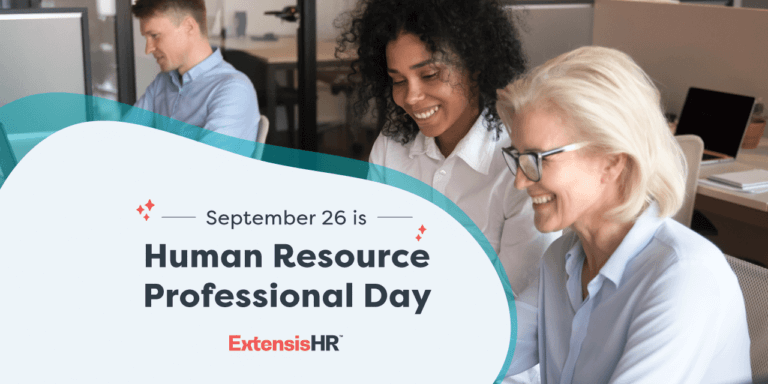3 Open Enrollment Tips to Drive Success

Quick look: Open enrollment is a critical period for small and medium-sized businesses (SMBs), when employees select their benefits for the upcoming year. For employers, it can be a complex and time-consuming process, fraught with paperwork, deadlines, and the need to ensure that staff are well-informed and supported. Below, we share three open enrollment best practices and discuss how a professional employer organization (PEO) can help busy companies make the most of their benefit election cycle.
Open enrollment, made easy.
Our free guide contains everything you need to master open enrollment communication, from expert advice to customizable email templates.
Download My Copy
Open enrollment is a designated period each year when employees can review, adjust, or select their benefits, including health insurance, retirement plans, and voluntary and ancillary options. With approximately 155 million Americans relying on employer-sponsored health insurance, this window is crucial because the choices made during open enrollment will impact coverage and financial well-being for the upcoming year.
For employers, open enrollment is equally significant; it’s a time to communicate benefit options, ensure compliance with regulations, and support staff in making informed decisions. However, without a streamlined process, it can become stressful and confusing for everyone involved.
Read on to review the key aspects of open enrollment, why it’s important to businesses and their staff, and three tips to improve and simplify the experience.
What is open enrollment?
Open enrollment is an annual period in which employees can enroll in, change, or cancel insurance plans for themselves and their families for the upcoming year. This timeframe usually occurs during the fall and is limited to a few weeks.
Typically, employees may only change their benefit elections during open enrollment unless they experience a mid-year qualifying life event (QLE), such as losing existing coverage, getting married or divorced, having a baby or adopting a child, etc.
Why is open enrollment important?
Open enrollment is a critical time for businesses and employees alike.
For employers, it’s an opportunity to educate staff on their available benefit plans, which can increase benefit literacy, utilization rates, and return on investment (ROI). Additionally, organizations can offer more personalized plans during open enrollment, fostering employee well-being, helping workers better understand their total rewards, and aiding in recruiting and retention.
For staff, open enrollment is the best time of year to review benefit utilization habits and enroll in the coverage that makes the most sense for the future. It’s also a chance to learn more about how to take advantage of everything their employer offers.
3 open enrollment tips for SMBs
An successful open enrollment season typically inspires employees to become more engaged, more confident in their benefits elections, and more loyal to their employers.
However, these positive outcomes don’t just happen by chance. To experience open enrollment success, organizations must adhere to best practices like the following.
1. Develop an open enrollment strategy
Every successful initiative starts with a plan, and open enrollment is no exception. Having a strategy in place keeps your team organized and efforts aligned with business goals. When creating your open enrollment strategy, here are a few key questions to ask:
- Do you have a specific goal for open enrollment? For example, you could aim to increase plan participation or improve employee engagement.
- How will you achieve that goal? Determine what’s required to reach your objective and work backward to develop a project roadmap for how you will get there.
- Do you have support from senior leadership? No companywide strategy can succeed without support from the top, and senior leadership should be involved when developing and executing the open enrollment strategy. Their buy-in will demonstrate an organizational commitment to the strategic direction.
- Is your benefits package competitive? Beyond core benefits like health insurance and a 401(K) retirement plan, consider offering voluntary benefits like student loan repayment, pet insurance, and family-forming support.
- Is your technology up to date? Employees should be able to easily enroll in and review their benefit elections, whether on desktop or mobile.
Developing a strong open enrollment strategy takes time and resources. For SMBs juggling multiple priorities, partnering with a professional employer organization (PEO) may make sense.
2. Clearly and consistently communicate
Effective communication is at the center of a productive open enrollment period. During this time, employers should regularly share all benefit information with staff and promptly address any questions.
Business leaders should share key details, such as important dates, deadlines, or plan changes, and follow up with frequent reminders. Employers can also develop a comprehensive open enrollment communication plan with targeted distribution dates and deadlines and considers the following:
Audience
Open enrollment doesn’t just affect employees, but their family members, as well. Be sure to keep this in mind when drafting communications.
Messaging
How do you plan on notifying staff? Will specific employee segments require different communications depending on plan changes or updates? How will messages be sent (via email, posted on a company intranet, or shared through collaboration tools like Microsoft Teams)? It’s also essential to update your employee handbook as needed.
Additionally, consider sending several shorter messages instead of one or two lengthy ones that may overwhelm workers. Explaining plan details in simple terms can also improve comprehension.
Upcoming changes
Imminent plan changes may create uncertainty for some employees, so it’s important for business leaders to understand these updates and communicate them clearly to minimize stress. When discussing updates with staff, consider:
- What benefits they used to have
- What they are gaining
- What they are losing
- Any pertinent action items
Corporate objectives
Be sure to keep your overarching open enrollment goals in mind when developing messaging. For example, if your company wants to increase participation in a particular program, your communication plan can include correspondence highlighting that plan’s features. It’s also best practice to tangibly track success (analyzing enrollment numbers, email open rates, webinar participation, etc.).
From a messaging roadmap to customizable email templates, our free open enrollment communication guide has what you need to streamline your process. Access your copy now.
3. Emphasize education
Ensuring that employees can make the right elections for themselves and their families should be a goal for all employers, and educating staff on their benefit options is a must.
Aflac’s 2024-2025 WorkForces Report found that 51% of employees don’t fully understand their benefits policies, and 71% wish they had more information about their plans. Additionally, a recent National Association of Insurance Commissioners (NAIC) survey revealed that only about 25% of Gen Z, a significant workforce segment, understand the terms “deductible” and “copay.”
To narrow this knowledge gap, employers should hold an informational enrollment meeting to discuss available benefit options. Workers will likely have questions, especially if there are any plan changes, additions, or reductions, so it’s wise to include extra time at the end of the meeting for a question-and-answer session. A member of the human resources (HR) team or your PEO’s benefits experts may offer a one-on-one meeting to those who have additional questions or would like to discuss their needs privately.
ExtensisHR: Your partner for all things benefits
Open enrollment season is a chance to boost employee engagement and plan participation, and a PEO like ExtensisHR can assist every step of the way.
In addition to helping SMBs navigate open enrollment, ExtensisHR provides a full range of Fortune 500-level benefits designed for today’s multigenerational workforce, as well as benefits administration and management services, including:
- Benefits planning, servicing, and consulting (including proactive, year-round benefits communications)
- COBRA compliance and administration
- Full ERISA compliance and fiduciary services
- ACA compliance
These offerings and services are complemented by insightful and easy-to-use technology. Our DEI Dashboard helps businesses understand which plans may resonate most with their key demographics, while the Work Anywhere® platform lets employees to manage and enroll in benefits directly from their devices.
To further help employees truly understand their benefits, ExtensisHR’s Employee Solution Center offers professionals who can guide staff through plan features, qualifying life events, the benefit election process, and more.
Make this year’s open enrollment better than ever. Download our free guide, “Open Enrollment Communication Made Easy: Best Practices for Employers,” or contact us to learn more about a partnership.



